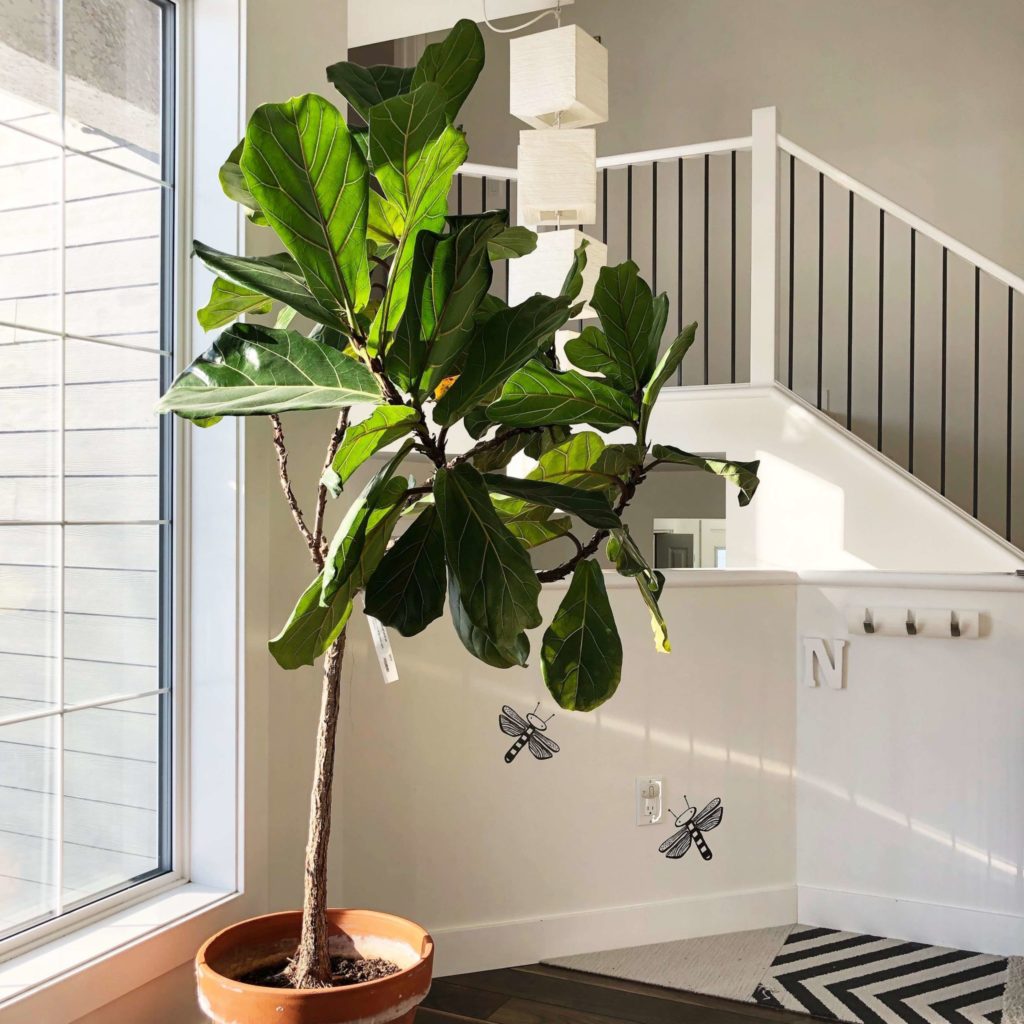Hey there, plant lovers! Ready to transform your home into a lush paradise? Big home plants can make a dramatic difference, bringing life, color, and a touch of the tropics indoors. This guide explores everything you need to know about selecting, styling, and caring for these gentle giants, so you can create a space that truly wows.
Choosing Your Colossal Companion: Finding the Perfect Plant for You
Bringing the outdoors in starts with choosing the right plant. Consider these factors before you welcome a new leafy friend into your home:
1. Let There Be Light!
Just like us, plants need light to thrive. But different plants have different light preferences:
- Low Light: These hardy souls tolerate dimmer conditions, but might not grow as quickly. Think of spaces with north-facing windows or rooms with limited natural light. Examples: Snake Plant, ZZ Plant.
- Indirect Light: The sweet spot for many popular big home plants! This means bright light, but not direct sunlight (think of light that’s been filtered through a sheer curtain). Examples: Monstera Deliciosa, Fiddle Leaf Fig, Rubber Plant.
- Bright Light: These sun-worshippers crave those sunny spots. South- or west-facing windows are ideal. Examples: Bird of Paradise, some palm varieties.
Pro Tip: Observe the light patterns in your home throughout the day. You might be surprised where those sunny and shady spots are!
2. Size Matters
Before you fall head over heels for a towering Ficus, make sure you’ve got the space to accommodate its potential growth. Consider both the height and width a plant can reach.
- Measure Up: Don’t rely on guesswork! Grab a measuring tape and check the dimensions of the area where you envision your plant. This will help you narrow down your options to plants that realistically fit.
- Think Long-Term: Remember, plants grow! That cute little sapling you bring home could turn into a magnificent jungle giant in a few years. Research a plant’s mature size to avoid any surprises down the line.
3. Carefree or High-Maintenance?
Let’s be real—plant parenthood isn’t for everyone. Some plants are content with a little water now and then, while others require a bit more TLC. Choose a plant that suits your lifestyle and commitment level.
- Beginner-Friendly: If you’re new to this whole plant thing (or have a history of accidental plant homicide), start with low-maintenance options. Look for plants that tolerate some neglect when it comes to watering and aren’t too fussy about humidity. Examples: Snake Plant, ZZ Plant, Cast Iron Plant.
- Moderate Care: These plants appreciate a bit more attention, but aren’t overly demanding. They might require more frequent watering or occasional misting. Examples: Monstera Deliciosa, Peace Lily, Rubber Plant.
- High-Maintenance: These divas of the plant world have specific needs and thrive on regular care. They might require frequent fertilizing, humidity control, or special lighting. Examples: Fiddle Leaf Fig, Maidenhair Fern, Calathea varieties.
4. Matching Your Style
Your home is a reflection of your personality, and your plants should be, too! Think about the overall aesthetic you want to create.
- Modern & Minimalist: Clean lines and simple shapes reign supreme. Look for plants with architectural silhouettes and striking foliage. Examples: Snake Plant, ZZ Plant, Fiddle Leaf Fig.
- Bohemian & Eclectic: Create a layered, vibrant look with plants that have interesting textures and a variety of shapes and sizes. Examples: Monstera Deliciosa, Prayer Plant, String of Pearls.
- Tropical & Lush: Transform your home into a jungle oasis with large, leafy plants that evoke a sense of the tropics. Examples: Bird of Paradise, Banana Plant, Palm varieties.
Our Top Plant Picks: A Guide to Stunning Indoor Giants
Ready to bring home a leafy friend? Here are a few of our favorite big home plants to inspire you:
| Common Name (Scientific Name) | Description | Care Summary | Design Tips |
|---|---|---|---|
| Monstera Deliciosa | Iconic, glossy leaves with signature “holes” or cuts (called fenestrations!). | Prefers bright, indirect light. Allow the top inch of soil to dry out between waterings. Enjoys moderate humidity. | Makes a bold statement in any room. Train it to climb a moss pole for vertical drama. |
| Snake Plant (Sansevieria) | Tall, upright leaves with striking patterns. | Extremely low-maintenance! Tolerates low light and infrequent watering. Allow soil to dry completely between waterings. | Architectural shape adds a modern touch. Perfect for beginners or those who forget to water occasionally! |
| Fiddle Leaf Fig (Ficus lyrata) | Large, sculptural leaves shaped like—you guessed it—fiddles! | Can be a bit finicky (but oh-so-rewarding). Prefers bright, indirect light and consistent watering. Sensitive to drafts and temperature fluctuations. Benefits from regular misting. | Creates a dramatic focal point in a well-lit room. Best for those willing to give it a bit more attention. |
| Bird of Paradise (Strelitzia) | Large, paddle-like leaves resemble banana leaves. Produces striking orange and blue flowers (in ideal conditions). | Needs plenty of bright, indirect light to thrive. Water when the top inch of soil is dry. Enjoys humidity. | Adds a tropical flair to your space. Best suited for bright, humid environments. |
| Rubber Plant (Ficus elastica) | Large, glossy leaves come in various shades of green, burgundy, or variegated patterns. | Relatively low-maintenance. Tolerates low light but prefers bright, indirect light. Water when the top inch of soil is dry. Wipe leaves occasionally with a damp cloth. | Easy to care for and adds a touch of sophistication to any room. Can be pruned to control size and shape. |
| ZZ Plant (Zamioculcas zamiifolia) | Shiny, dark green leaves on upright stems. | Practically indestructible! Tolerates very low light and infrequent watering. Avoid overwatering. | Perfect for beginners or those with “brown thumbs.” Adds a touch of modern elegance to any space. |
| Peace Lily (Spathiphyllum) | Elegant, dark green leaves and striking white “flowers” (which are actually modified leaves called spathes!). | Prefers medium to bright, indirect light. Keep the soil evenly moist but not soggy. Enjoys humidity. | Known for its air-purifying qualities. Adds a touch of tranquility to bedrooms or home offices. |
| Cast Iron Plant (Aspidistra elatior) | As its name suggests, this plant is tough! Long, strappy, dark green leaves. | Extremely low-maintenance. Tolerates low light, infrequent watering, and even some neglect. | A great choice for those who want a plant they practically can’t kill! Adds a classic, understated elegance to any room. |
If you have a big home, you should have big home plants as well to make a stunning combination. To know more about some of the best and low-maintenance big leaf house plants, follow the link. And if you want to know about the best ways to grow big plants, you can check out the link.
Nurturing Your Green Giant: Essential Care Tips
Congratulations on welcoming a new leafy friend into your home! Now, let’s ensure they live a long, healthy life:
1. Watering: The Goldilocks Approach
Overwatering is the number one culprit behind plant fatalities. The key is to keep the soil moist but not waterlogged.
- Feel the Soil: Don’t rely on a strict watering schedule. Instead, stick your finger about an inch or two into the soil. If it feels dry, it’s time to water. If it feels damp, hold off.
- Watering Techniques: Water thoroughly until you see water draining from the bottom of the pot. Discard any excess water that collects in the saucer.
- Adjust for the Season: Plants generally need less frequent watering during the fall and winter months when growth slows down.
2. Light: Finding the Sweet Spot
Remember those light requirements we talked about? Observe your plant—is it thriving or sending out distress signals? Yellowing leaves, stunted growth, or a leggy appearance can all indicate a light issue.
- Don’t Be Afraid to Experiment: If your plant isn’t happy in its current location, try moving it to a spot with more or less light.
- Rotate for Even Growth: Regularly rotating your plant (every week or two) helps ensure all sides receive adequate light and promotes balanced growth.
3. Fertilizer: A Little Boost Goes a Long Way
Just like us, plants need nutrients to flourish. Feed your leafy friend with a balanced, water-soluble fertilizer during their growing season (typically spring and summer).
- Follow the Instructions: Over-fertilizing can be just as harmful as under-fertilizing. Always follow the directions on your chosen fertilizer.
- Less is More: It’s better to err on the side of caution when it comes to fertilizing. Too much fertilizer can lead to a buildup of salts in the soil, which can damage the roots.
4. Repotting: Giving Your Plant Room to Grow
As your plant grows, it will eventually outgrow its pot. When you start to see roots circling the bottom of the pot or poking out of the drainage holes, it’s time for a new home!
- Choose the Right Size: Select a pot that’s only slightly larger than the previous one (about 1-2 inches wider in diameter).
- Use Fresh Potting Mix: Don’t reuse old potting soil. Fresh potting mix provides essential nutrients and good drainage.
5. Troubleshooting: Dealing with Common Issues
Even the most attentive plant parent can encounter problems. Here are some common issues and solutions:
- Pests: Inspect your plants regularly for signs of pests, such as spider mites, mealybugs, or aphids. Treat infestations promptly with insecticidal soap or neem oil.
- Yellowing Leaves: This can be caused by overwatering, underwatering, nutrient deficiencies, or pests. Check the soil moisture, adjust your watering habits, and consider fertilizing if needed.
- Drooping Leaves: Could be a sign of underwatering, overwatering, or low humidity. Check the soil moisture and adjust accordingly. Mist the leaves regularly to increase humidity.
Big Home Plants: More Than Just Pretty Faces
Beyond their undeniable beauty, big home plants offer a host of benefits:
- Air Purification: Some plants act as natural air filters, removing toxins and improving indoor air quality. Studies by NASA have suggested that plants can remove harmful chemicals like formaldehyde, benzene, and trichloroethylene from the air. Examples: Snake Plant, Peace Lily, Spider Plant.
- Mental Well-being: Research suggests that being around plants can reduce stress, boost mood, and increase feelings of calm and relaxation. The presence of nature indoors can also improve focus and concentration.
- Sustainability: Choosing plants over artificial décor is an eco-friendly choice, bringing a touch of the natural world into your home and promoting a connection to nature.
SEO Analysis: Big Home Plants
I. Recommended Titles:
- Design with Impact: The Top Tall Indoor Plants for Every Room (Combines “tall,” “statement,” and practical application)
- Low-Maintenance Giants: Best Large Indoor Plants for Beginners (Targets beginners seeking “easy” and “big” plants)
- Beyond the Fiddle Leaf Fig: Unique Statement Houseplants to Elevate Your Space (Focuses on the “unique” and “statement” aspects, hinting at alternatives to common choices)
II. Powerful Key Lines:
- Go Big or Go Home: Transform your space with the dramatic presence of large indoor plants. (Emphasizes the transformative impact)
- More Than Just Greenery: Large houseplants are living sculptures that add height, texture, and personality. (Highlights design benefits beyond simple greenery)
- Plant Parenthood Made Easy: Discover stunning, low-maintenance giants that even beginners can enjoy. (Caters to the “easy care” seeking audience)
- Find Your Perfect Match: From statement-making palms to elegant, air-purifying giants, we’ve got the perfect big home plant for you. (Emphasizes variety and finding the right fit)
III. Important Details:
- Benefits of Big Home Plants: Visual impact, air purification, create focal points, bring the outdoors in, improve mental well-being.
- Care Considerations: Light requirements (low, indirect, bright), watering needs, humidity preferences, potential size limitations.
Your Green Oasis Awaits
With a little planning and care, you can transform your home into a thriving sanctuary. Embrace the beauty and benefits of big home plants and enjoy the journey of watching your leafy companions flourish!
- Black Backsplash With White Cabinets: A Bold Kitchen Design - November 5, 2025
- Black and White Kitchen Backsplash: Ideas for Timeless Style - November 4, 2025
- Kitchen Backsplash Ideas: Fresh Looks to Upgrade Your Space - November 1, 2025










